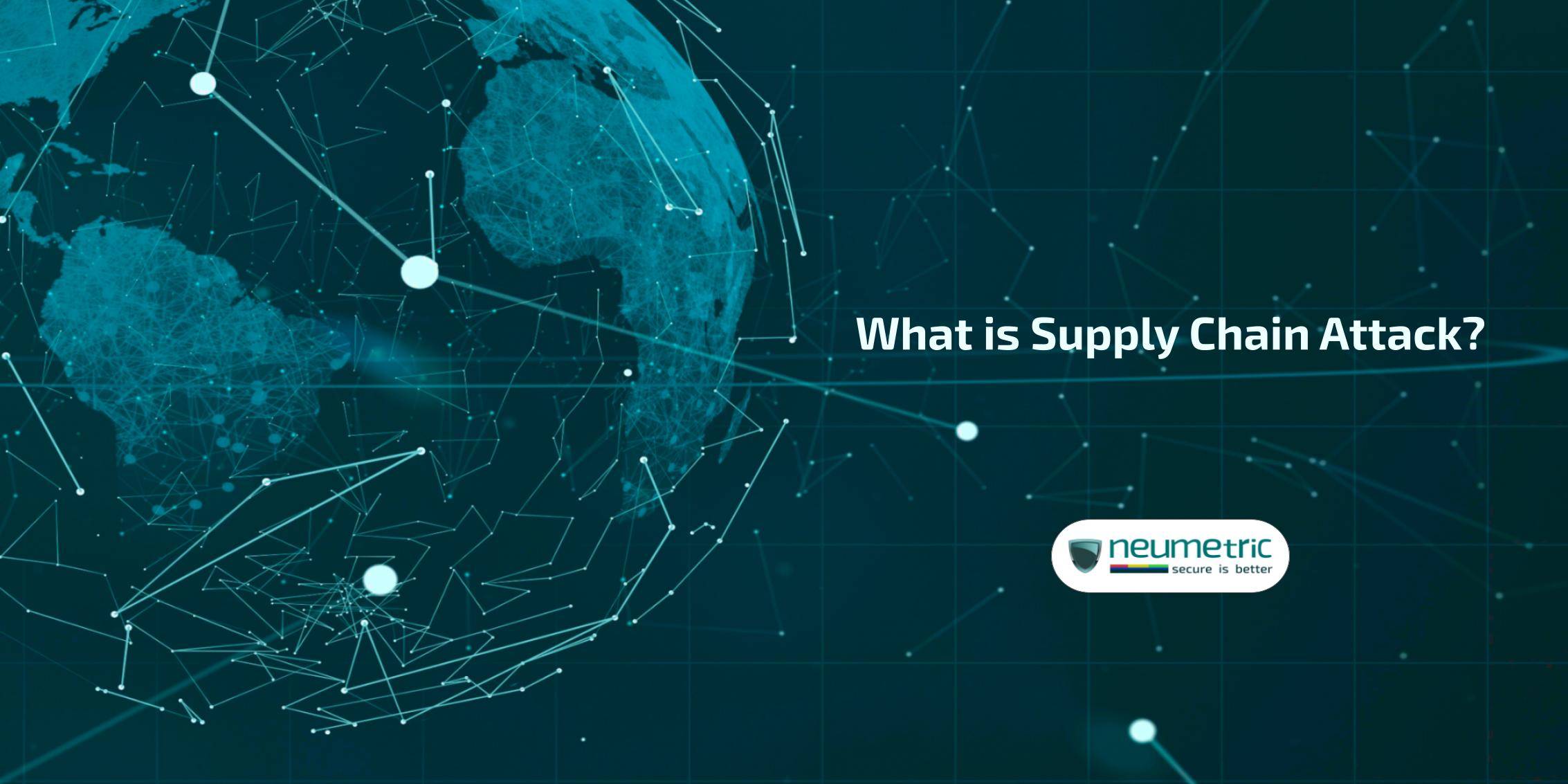Table of Contents
ToggleWhat is Supply Chain Attack?
Introduction
In the labyrinth of cyberspace, where digital highways intersect & data flows ceaselessly, lurks a clandestine threat: the supply chain attack. Unlike conventional cyber threats that storm the front gates of organizations, supply chain attacks infiltrate through trusted channels, exploiting the very essence of interconnectedness. Picture it as a Trojan horse slipping past the sentries, camouflaged amidst a convoy of trusted allies. These attacks, often stealthy & insidious, target the intricate web of vendors, suppliers & contractors that sustain modern organizations. They capitalize on the implicit trust established within supply chains, leveraging it to gain unauthorized access to coveted digital assets.
Supply chain attacks represent a sinister evolution in cyber warfare, where adversaries eschew direct confrontations in favor of exploiting the weakest links in the chain. By compromising a single trusted entity within the supply chain, threat actors can penetrate the defenses of multiple organizations, cascading chaos & calamity on an unprecedented scale. From government agencies to multinational corporations, no entity is immune to the pervasive reach of supply chain attacks.
In this journal, we embark on a journey to unravel the enigma of supply chain attacks, dissecting their anatomy, exploring notable examples & delving into their profound impact. Moreover, we’ll equip you with the knowledge & strategies necessary to fortify your defenses against this omnipresent threat. So, fasten your seatbelts as we navigate through the murky waters of supply chain attacks, shedding light on the shadows lurking within the heart of modern commerce & technology.
Types of Supply Chain Attacks
- Hardware-based Attacks: Consider the innocuous USB drive innocently passed around the office, its sleek exterior concealing a malevolent secret: embedded malicious firmware waiting to unleash chaos upon insertion. Or envision a server freshly unboxed from the manufacturer, its components tainted with stealthy backdoors designed to grant unauthorized access to nefarious actors. These scenarios illustrate the ominous reality of hardware-based supply chain attacks, where adversaries manipulate physical components to infiltrate organizational defenses. By exploiting vulnerabilities in the manufacturing & distribution process, threat actors sow the seeds of distrust within the very hardware upon which organizations rely. From compromised routers to tampered peripherals, hardware-based attacks pose a grave threat, as they bypass traditional cybersecurity measures, lurking within the infrastructure undetected.
- Software-based Attacks: In contrast to their hardware counterparts, software-based supply chain attacks operate in the shadows of digital realms, infiltrating systems through the guise of legitimate applications & updates. Picture a seemingly routine software update prompt appearing on your screen—an innocent click away from disaster. Unbeknownst to the user, this update harbors a malevolent payload, injected by adversaries seeking to exploit vulnerabilities within the supply chain. Once unleashed, this malicious code stealthily permeates networks, evading detection as it orchestrates a symphony of chaos. From ransomware disguised as productivity tools to spyware masquerading as system utilities, software-based attacks prey on the trust placed in familiar software vendors. With each compromised update, the tendrils of infiltration extend deeper into the fabric of organizational infrastructure, laying the groundwork for data breaches & systems of catastrophic proportions.
Examples of Supply Chain Attacks
SolarWinds Attack
The SolarWinds breach serves as a chilling testament to the devastating potential of supply chain attacks, sending shockwaves through the cybersecurity landscape. At its epicenter lay SolarWinds, a reputable provider of network management software trusted by a multitude of organizations worldwide. However, unbeknownst to its clients, SolarWinds became unwittingly complicit in a digital coup orchestrated by sophisticated threat actors. Exploiting vulnerabilities in SolarWinds’ software update mechanism, adversaries clandestinely injected a malicious payload into legitimate updates, effectively weaponizing the very tool trusted to bolster network security.
As organizations dutifully installed these tainted updates, they unwittingly opened the floodgates to a barrage of cyber assaults. With unprecedented precision, the malware granted adversaries unfettered access to sensitive networks, including government agencies, critical infrastructure & Fortune 500 companies. The ramifications were profound, triggering a domino effect of data breaches, espionage & systemic compromise. The SolarWinds attack underscored the chilling reality that even the most trusted allies within the supply chain can harbor hidden dangers, morphing from guardians of security into unwitting accomplices of chaos.
NotPetya Attack
The NotPetya attack, masquerading as a ransomware outbreak, sent shockwaves reverberating across the globe, leaving a trail of destruction in its wake. Originating from a seemingly innocuous Ukrainian accounting software, the attack quickly metastasized into a full-blown global pandemic of digital chaos. Disguised as a routine software update, the malware cunningly infiltrated unsuspecting systems, laying dormant until its sinister intent was unleashed. Upon activation, NotPetya embarked on a relentless rampage, encrypting data, paralyzing critical infrastructure & wreaking havoc on an unprecedented scale.
From multinational corporations to small businesses, no entity was spared from the indiscriminate wrath of NotPetya. The collateral damage was staggering, with billions of dollars in economic losses incurred as businesses struggled to recover from the onslaught. Beyond the financial toll, the attack eroded trust in software updates, instilling a pervasive sense of paranoia within the cybersecurity community. The NotPetya attack served as a sobering wake-up call, highlighting the existential threat posed by supply chain attacks & the urgent need for collective vigilance & resilience in the face of evolving cyber threats.
Impact of Supply Chain Attacks
Supply chain attacks unleash a tidal wave of devastation, leaving organizations grappling with profound repercussions.
- Financial Loss: The aftermath of a supply chain attack paints a grim financial landscape, with organizations facing a cascade of monetary woes. Remediation costs soar as cybersecurity experts scramble to contain the breach, assess the extent of the damage & restore compromised systems. From forensic investigations to system overhauls, every remedial step exacts a toll on financial reserves already stretched to their limits. Legal fees compound the financial burden as organizations navigate the labyrinthine legal landscape, facing potential lawsuits from disgruntled customers, shareholders & regulatory bodies. Regulatory fines loom ominously on the horizon, levied as punishment for lapses in compliance & data protection. Moreover, the indirect costs of disrupted operations exacerbate the financial strain, as revenue streams dwindle & business continuity hangs in the balance. For many organizations, the financial fallout of a supply chain attack is more than a mere setback—it’s a crippling blow that threatens to push them to the brink of bankruptcy.
- Reputational Damage: Beyond the tangible realm of finances, the fallout from a supply chain attack reverberates deeply within the intangible domain of trust & reputation. Organizations painstakingly cultivate their brand image over years of diligent effort & investment, only to see it tarnished in the blink of an eye. The breach of trust inflicted by a supply chain attack strikes at the very core of brand credibility, shaking the foundations upon which customer relationships are built. Customers, once loyal & steadfast, now cast a wary eye upon the tarnished brand, questioning its integrity & reliability. Stakeholders, too, recoil from the specter of uncertainty, withdrawing their support & investment as confidence wanes. The ripple effect of reputational damage extends far beyond the immediate aftermath of the attack, casting a long shadow that lingers in the collective consciousness. Rebuilding trust & restoring reputation becomes an uphill battle fraught with challenges, as organizations strive to redeem themselves in the eyes of a skeptical public. Yet, for many, the scars of a supply chain attack remain etched indelibly upon the annals of corporate history, serving as a cautionary tale of the perils lurking within the interconnected web of modern commerce & technology.
Preventing Supply Chain Attacks
- Vendor Risk Management: Effective vendor risk management serves as the first line of defense against the insidious threat of supply chain attacks. It entails a comprehensive approach encompassing meticulous assessment, vigilant monitoring & proactive mitigation strategies. Organizations must conduct thorough due diligence on third-party suppliers, scrutinizing their security practices & assessing their vulnerability to cyber threats. Robust security protocols should be established, outlining stringent requirements for data protection, access controls & incident response capabilities. Regular audits & assessments should be conducted to ensure compliance with established standards & identify potential vulnerabilities or shortcomings. Moreover, clear contractual obligations should be delineated, outlining the responsibilities of both parties regarding cybersecurity measures & breach notification procedures. By fostering transparency & accountability within the vendor ecosystem, organizations can fortify their defenses against potential threats lurking within the supply chain.
- Code Signing: Code signing serves as a digital safeguard against the nefarious tampering of software updates, providing end-users with a verifiable seal of authenticity. Developers affix digital signatures to their code, cryptographically verifying its integrity & confirming its origin. This digital seal serves as a beacon of trust, assuring users that the software update they are installing originates from a legitimate source & has not been maliciously altered in transit. By instilling confidence in the authenticity of software updates, code signing mitigates the risk of tampered updates & malicious injections, thwarting potential supply chain attacks at the source. End-users can rest assured that the software they are installing is free from unauthorized modifications & poses no inherent security risks. Moreover, code signing facilitates traceability & accountability, enabling developers to track the lineage of software updates & identify any anomalies or suspicious activity. In an era plagued by rampant cyber threats, code signing emerges as a vital tool in the arsenal of cybersecurity, bolstering the resilience of organizations against the ever-present specter of supply chain attacks.
Conclusion
In the tumultuous realm of cybersecurity, supply chain attacks stand out as a formidable & ever-present threat. As technology advances & networks become increasingly interconnected, the potential for exploitation within the supply chain grows exponentially. However, this isn’t a battle lost from the start. Organizations equipped with knowledge & foresight can effectively thwart these insidious attacks, safeguarding not only their assets but also their hard-earned reputation.
Understanding the intricacies of supply chain attacks is the first step towards fortification. It’s imperative for organizations to recognize the vulnerabilities lurking within their supply chains, whether they stem from hardware, software or human error. By dissecting the anatomy of past attacks & learning from their consequences, organizations can better prepare themselves to face the challenges posed by future threats.
Yet, preparation alone is not enough. Proactive measures must be ingrained within the fabric of organizational culture. From robust vendor risk management protocols to the implementation of stringent code signing practices, every step taken towards bolstering defenses contributes to the collective resilience against supply chain attacks. By fostering a culture of vigilance, collaboration & continuous improvement, organizations can effectively mitigate the risks posed by supply chain attacks & emerge stronger & more resilient in the face of adversity.
Frequently Asked Questions [FAQ]
What are the common targets of supply chain attacks?
Supply chain attacks cast a wide net, targeting a plethora of entities interconnected within the digital ecosystem. Prime targets include software vendors, whose products serve as conduits for malware dissemination, unwittingly spreading malicious code to unsuspecting users. Cloud service providers, entrusted with vast repositories of sensitive data, also find themselves in the crosshairs of adversaries seeking to exploit vulnerabilities within their infrastructure. Furthermore, third-party suppliers with access to critical systems or sensitive information are prime targets, as compromising their defenses provides threat actors with a foothold to penetrate deeper into the supply chain. From manufacturers to logistics providers, no entity is immune to the pervasive reach of supply chain attacks, underscoring the need for comprehensive cybersecurity measures across all tiers of the supply chain.
How can organizations detect & respond to supply chain attacks?
Detecting & responding to supply chain attacks require a multifaceted approach, blending proactive measures with swift, decisive action. Organizations can deploy sophisticated intrusion detection systems [IDS] armed with advanced threat intelligence, capable of identifying suspicious activities & anomalous behavior within the network. Conducting thorough audits of supply chain partners & vendors helps uncover potential vulnerabilities & weaknesses that could be exploited by adversaries. Additionally, establishing robust incident response protocols enables organizations to swiftly contain & mitigate the impact of supply chain attacks, minimizing damage & restoring normal operations expeditiously.
What role does cybersecurity play in mitigating supply chain risks?
Cybersecurity stands as the vanguard against the ever-looming specter of supply chain risks, serving as the cornerstone of defense in an interconnected world. Through continuous monitoring & analysis, cybersecurity professionals harness the power of threat intelligence to anticipate & preemptively thwart potential supply chain attacks. Vulnerability management practices ensure that potential weaknesses within the supply chain are identified & remediated before they can be exploited by adversaries. Furthermore, secure coding practices instill confidence in the integrity & authenticity of software updates, mitigating the risk of tampering & infiltration. In essence, cybersecurity serves as the linchpin of resilience, safeguarding organizations against the myriad threats lurking within the intricate web of supply chains.





